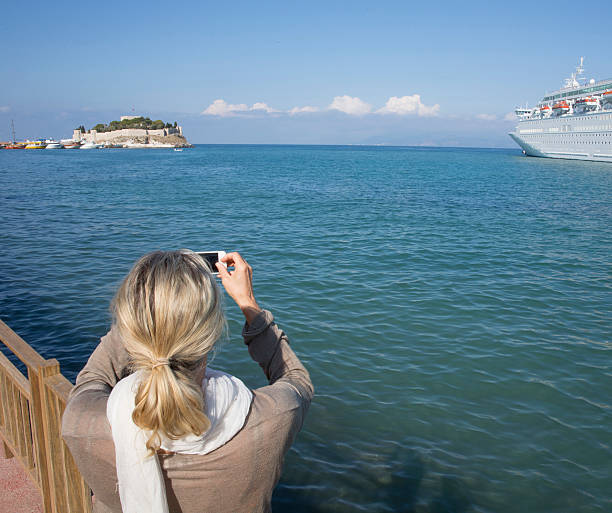One of the more imaginative innovations that cruise ship designers could have envisaged as part of our sea holidays have taken more of a central focus in recent years in the form of the much wider global roll out of virtual balconies. But if you’ve never cruised before and are wondering how these two words fit together to form a tangible product, read on.
Often, the decision on which type of stateroom to choose for your cruise boils down to price. The majority of passengers might see a balcony as a necessity for a private haven in which to enjoy the fresh outside air, while others might view their cabin as little more than a space to sleep, with every intention of spending as much time as possible in other parts of the ship. But generally, the cost involved with the two-category upgrade makes the decision for them. And it was on this premise that the idea for virtual balconies came to be.
Designed for Royal Caribbean’s newest class of ship – Quantum of the Seas – which debuted in 2014, the line dreamed up a way to bring the outdoors to the indoors. On all of its interior cabins, which generally don’t offer a view outside the cabin at all, the line installed an LED high resolution screen over 200 centimetres in length along the stateroom’s rear wall. To this screen, they connected a fixed camera located elsewhere on the ship which streams live footage of what it sees outside – usually the seemingly endless ocean.
To complete the illusion, Royal Caribbean even installed curtains along this screen for passengers and stateroom stewards to close at night, exactly as they would for those guests in the cabins offering a real balcony. So what you then have is a section of the room where you can sit and enjoy an artificial version of natural light to use as you please. You just don’t get the fresh air that comes with it.
With the camera constantly recording and streaming what it sees directly to these screens, complete with the sounds of the ocean or whatever the camera’s microphone is hearing. Whenever a ship is in port, that too is what guests in their rooms at the time will see. The same goes for sunrises and sunsets. There is a button which a passenger may use to turn the virtual balcony screen off but no, this screen cannot be converted into a significantly upgraded stateroom television.
In most cases, the LED screen is positioned along the rear wall of the cabin, however Cruise Advice recently saw on Voyager of the Seas that in some interior cabins, the screen has actually been positioned on the side wall rather than the back.
Unfortunately for those who may be potentially subject to mild motion sickness, the virtual balcony gives the impression the ship is moving in one direction, however your feet give a different feeling and can easily identify in which direction a cruise ship is actually moving. So if you’re easily nautious, you might wish to check whether such an illusion might upset your equilibrium or balance to see the ship moving one way and feel it moving in another at the same time. Or just keep the curtains closed.
While the virtual balcony has been rolled out to a huge global passenger market thanks to Royal Caribbean, it was in fact the boundless imagination of Disney Cruise Line which pioneered the concept a few years earlier. The main differences however is that theirs are more of a supplementary ‘Virtual TV’ on the side wall of interior cabins, designed as a port hole. A rather unique perk with the Disney design too is that guests will occasionally see characters from the entertainment giant’s iconic films such as The Little Mermaid, Nemo or even Toy Story drop by the screen and greet guests from time to time.
Virtual Balconies are now a standard across the Royal Caribbean fleet, having been fitted to many of the line’s ships including all new vessels, and with plans to complete the roll out as each ship undergoes regular dry dock refurbishment. In Australia, virtual balconies are in place on Explorer of the Seas and Voyager of the Seas and in time for next summer, will be available on Radiance of the Seas and Ovation of the Seas. Brisbane’s departing Legend of the Seas will likely be fitted with the technology when it enters dry dock in 2017, so unfortunately will not have the feature for its final season in Queensland next summer.

Leave a Reply